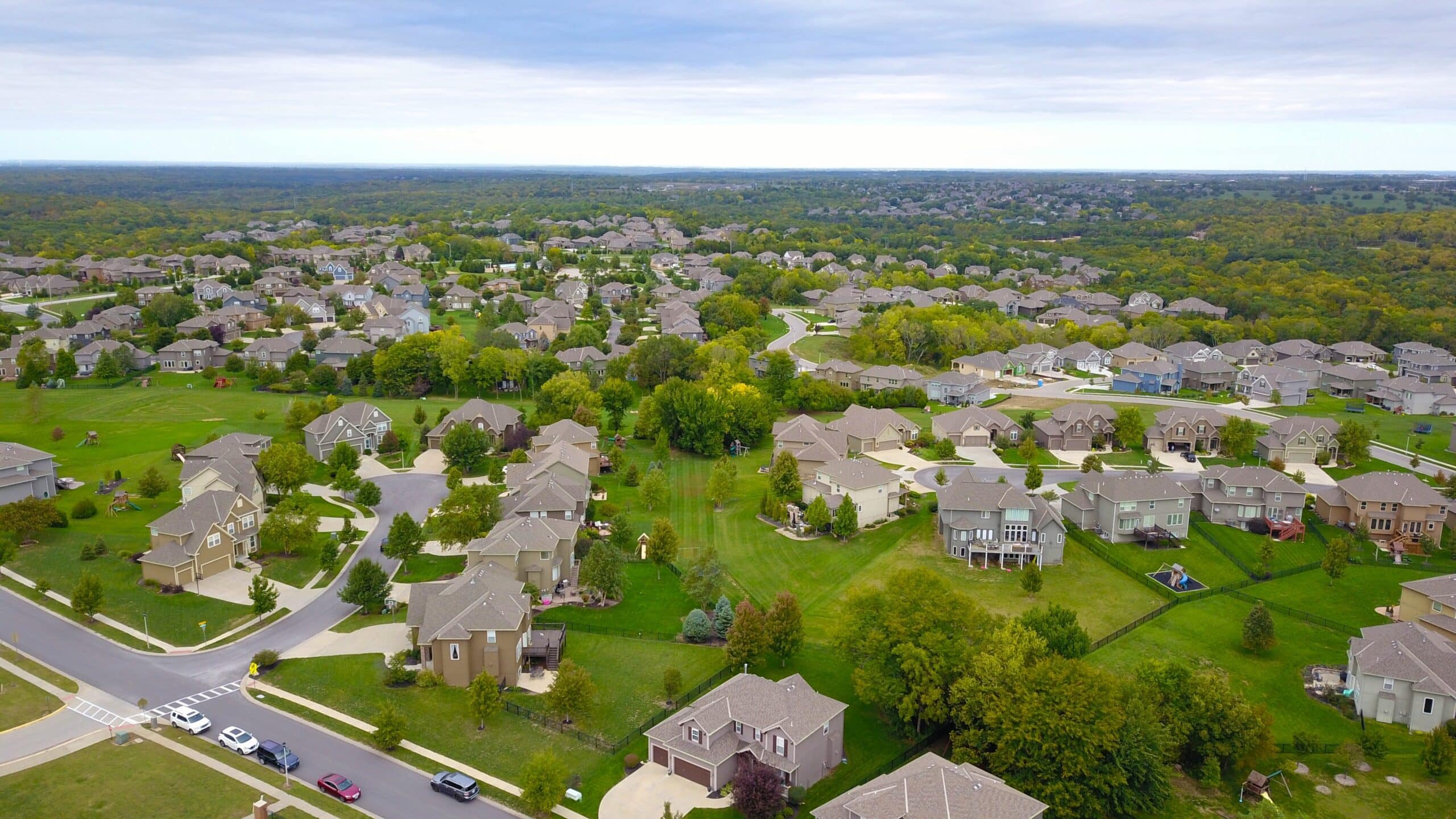
Four Ways to Look at Real Estate Investing
This post may contain links from our sponsors. We provide you with accurate, reliable information. Learn more about how we make money and select our advertising partners.
Many people might think the only way to invest in real estate is to buy and rent a single-family home. But there is more to real estate investing than just becoming a landlord. Commercial real estate is another way for investors to diversify their portfolios away from stock and bonds with real estate. And unlike being a landlord, where you have to actively manage the property and your tenants, investing in commercial real estate makes you a passive investor–the sponsor behind the project handles the day-to-day management of the property, you’re completely hands-off.
Commercial real estate is also much more than multifamily apartments and office buildings. Asset classes like self-storage, retail, and senior-housing all offer unique investment opportunities for investors. But like any product, commercial real estate is always evolving to meet the needs of the market. Four asset classes–Build-to-Rent, micro-units, student housing, and e-Commerce real estate–are providing new opportunities for investors, particularly in today’s economy.
Build-to-Rent
The U.S. Census Bureau estimates that 65% of Americans under the age of 35 currently rent. Although 92% of millennials consider homeownership a good investment, 48% of young adults say they have to delay buying a home because of their student loans. At the same time, a potential mass migration caused by COVID-19–either by the desire to get out of crowded cities and find more space or out of economic necessity for more affordable housing–could mean millions of young families will soon be looking for a new way to live.
A new type of multifamily property, known as Build-to-Rent (BTR), could potentially fill this housing need and create valuable opportunities for investors.
Build-to-Rent (BTR) takes the best aspects of single-family rentals–yards, driveways, that neighborhood feel, etc–and upgrades the renter experience by developing all the homes inside a professionally managed community. These BTR properties are similar to traditional, gated residential neighborhoods with great community amenities–swimming pools, tennis courts, dog parks–but without the HOA costs. Or a mortgage.
For investors, the BTR market has demonstrated its ability to achieve “Market Rate
Premiums” over competing Class A multifamily assets. CNBC reported “…the rents for
single-family are growing fast at 4.5% annually now compared with 3% rent growth for multifamily apartments…There is also much less turnover in single-family rentals, and
the rental market is much less volatile than the home sales market.”
Micro-units
The flip side of BTRs, which offer more space to renters, micro-units are “a purpose-built, typically urban, small studio or one-bedroom using efficient design to appear larger than it is and ranging in size from as little as 280 square feet up to as much as 450 square feet.”
Micro-units are perfect for the renters that want to live in urban cores, but can’t afford the high price of rent in metros like NYC or San Francisco without a roommate. A micro-unit costs roughly 20-30% below that of a conventional studio or one-bedroom and the building often leans heavily on amenities such as a common “living room” with a big screen tv, a large, reservable gourmet kitchen, shared workspaces, and so forth, to compensate for the smaller units.
For investors, micro-units can offer some of the highest rent per square foot of any multifamily property. Although they may cost more to build and operate, the premium
rent per square foot achieved more than makes up for the added cost, which can lead to
higher distributions for investors.
Student Housing
At the beginning of the pandemic, the student housing sector received several major blows. As universities across the country shut down and sent students home, student housing vacancies skyrocketed. As this happened, colleges and universities saw revenues plummet and some smaller colleges began to fail. However, many large, top-tier, major conference schools did open this fall, offering either in-person classes or a blend of online and in-person classes. Many of those larger schools took measures to actually grow their student population. Preparing for deferrals and reduced enrollments, every Ivy League school except Princeton University increased its acceptance rate this fall.
Student housing, like any market, must balance forces of supply (number of available beds) and demand (number of students seeking beds). Many students who were left stranded by the closing of their smaller schools are looking to transfer to bigger institutions. Recessions have often led to an increase in enrollment as well. Add to that the fact that a large portion of campuses have lowered their capacity for on-campus housing and the result has been an increase in off-campus housing demand near these top-tier schools.
The long term viability of a student housing market is highly dependent on consistent,
sustainable growth in the student population it serves. For investors, student housing has consistently demonstrated that it is resilient, proving to be recession-resistant in 2008. Looking ahead, the 2021/2022 school year should show continued enrollment growth due to continued high unemployment, as well as 2020/21 deferrals. As we exit the pandemic, the most desirable and best-capitalized universities will continue to exploit their competitive advantage to attract the nation’s best students in record numbers which, in turn, will propel their student housing markets.
e-Commerce Real Estate
While in-person retail sales, aside from key essential businesses like grocery stores, have significantly slowed during the pandemic, the decade-long trend of the growth in online shopping has only accelerated. In fact, consumer e-commerce sales have increased by 15-30% in most categories according to McKinsey Consulting. But the growth of e-commerce does not mean the end of physical buildings. It just means how we use real estate might shift.
According to Chris Caton, Head of Global Strategy & Analytics for Prologis, the largest owner, operator and developer of logistics real estate in the world, “E-fulfillment is among the most intensive uses of logistics real estate” and “Prologis estimates these customers require 1.2 million square feet of distribution space for each $1 billion in sales, which means e-commerce requires three times the space as traditional through-put distribution.”Investment in temperature-controlled warehousing, critical for shipping perishable goods
like groceries, climbed from $560 million in 2016 to $963 million in 2018. The industry’s
foothold pre-COVID was at 214 million square feet, but a 2019 CBRE report argued the
demand for cold-storage warehousing space could grow by 50% by 2024.
And e-commerce is only possible with data centers, another form of industrial real estate. Forbes reported that, amongst REITs, data centers were the only industry segment to “show a positive gain for the first quarter of 2020, growing by 8.8%.” For investors, heightened demand for last-mile distribution spaces will likely continue for years to come, especially in growing metro areas. As most stabilized industrial properties trade at prices that are above replacement cost, there could be ground-up development opportunities in locations where demand looks to outstrip supply.
No two real estate investment opportunities are the same. Each project comes with its own business plan, market assumptions, and potential for success (or underperformance). But these four asset classes are giving investors even more choice when it comes to commercial real estate investing. And with access comes opportunity. Using a Marketplace like the one powered by CrowdStreet, investors can compare dozens of individual deals (or real estate funds) to find the right one to add to their portfolio.
CrowdStreet is a content partner of Passive Income MD.
This article was written by an employee of CrowdStreet, Inc. (“CrowdStreet”) and has been prepared solely for informational purposes. CrowdStreet is not a registered broker-dealer or investment adviser. Nothing herein should be construed as an of er, recommendation, or solicitation to buy or sell any security or investment product issued by CrowdStreet or otherwise. This article is not intended to be relied upon as advice to investors or potential investors and does not take into account the investment objectives, financial situation or needs of any investor. All investing involves risk, including the possible loss of money you invest, and past performance does not guarantee future performance. All investors should consider such factors in consultation with a professional advisor of their choosing when deciding if an investment is appropriate.


Disclaimer: The topic presented in this article is provided as general information and for educational purposes. It is not a substitute for professional advice. Accordingly, before taking action, consult with your team of professionals.

